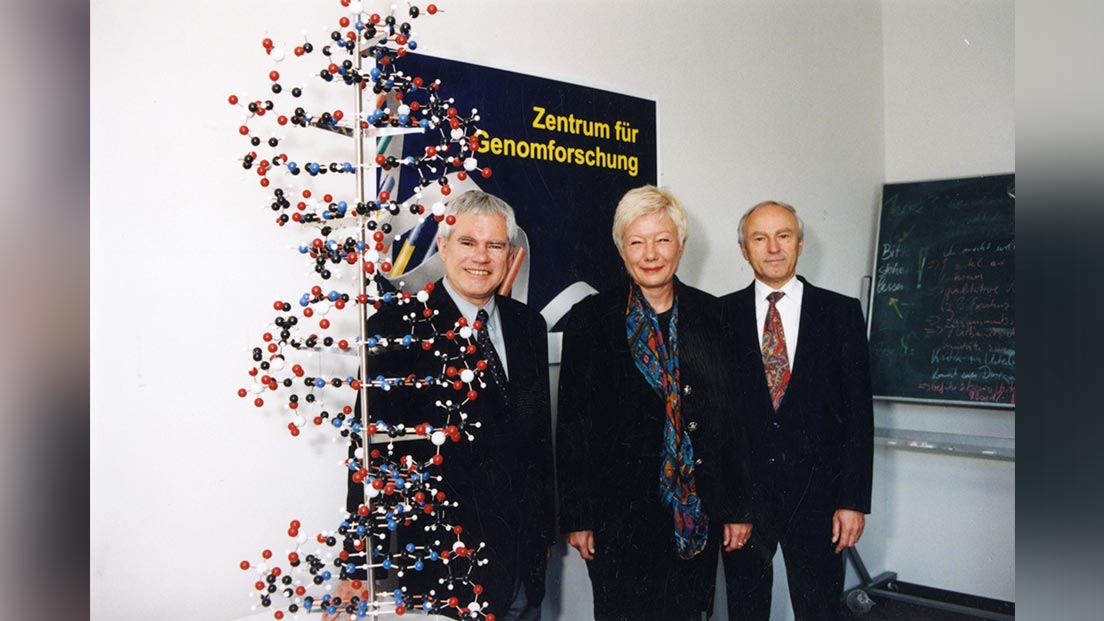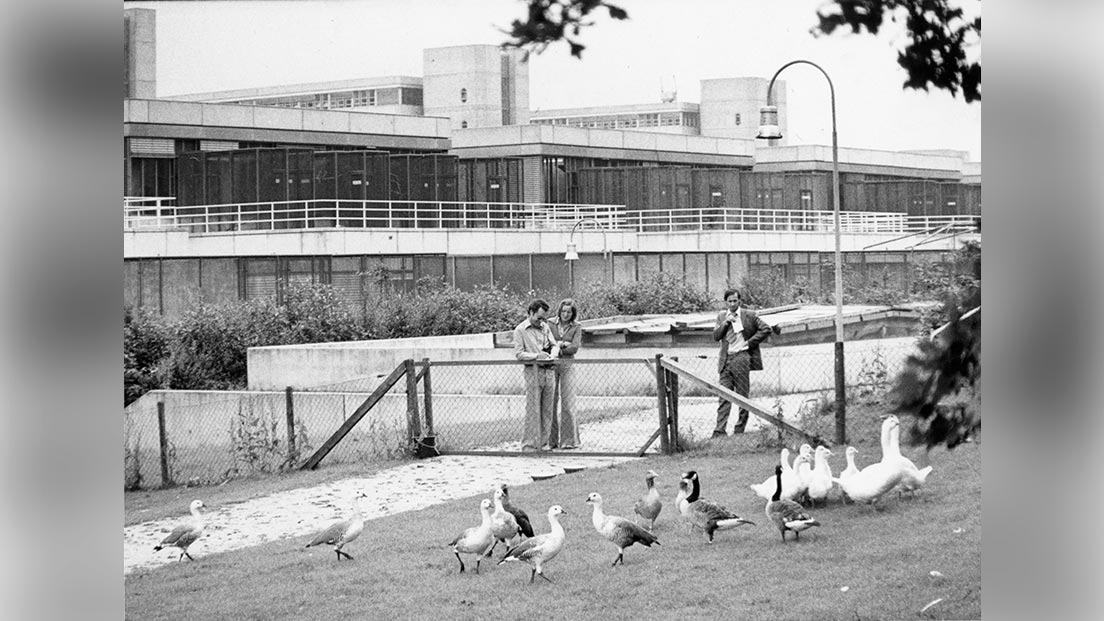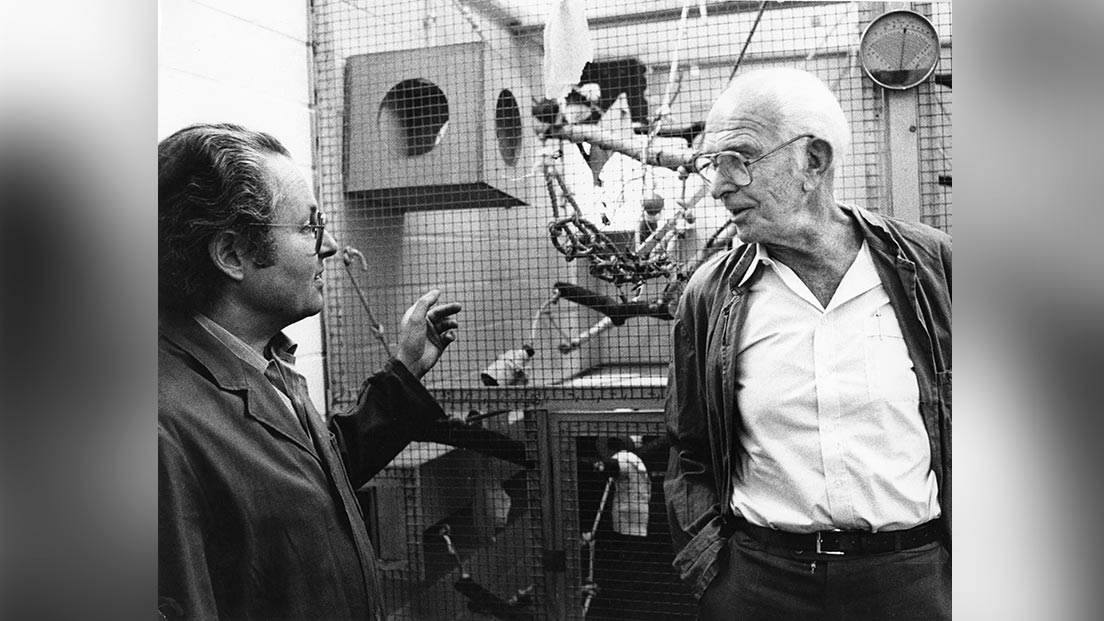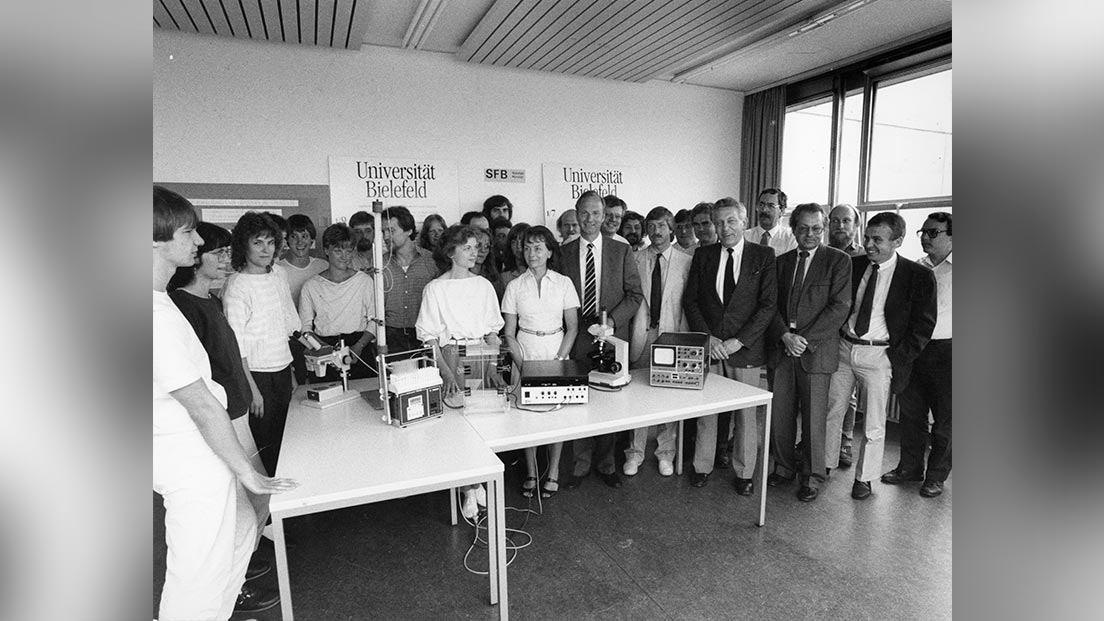Professor Dr. Klaus Immelmann made every effort after his appointment to develop the Behavioural Research building and the obligatory animal management. Above all, zebra finches were bred for research purposes. Today, a large number of animals are kept on the campus for scientific observation, including sea anemones, mini pigs and chameleons. From 1974 onwards, scientific research could finally begin step by step. At this time, the staff were based in the Behavioural Research building, which was completed in the same year. In 1977, the Faculty moved to the main university building (apart from the professorial chair for Behavioural Research).
Strong in (interdisciplinary) research
During the Faculty’s founding period, its main areas of study were behavioural research, metabolic physiology (i.e., research on producing solar energy) and molecular cellular biology (including research on molecular genetics). Since the 1980s, these have been joined by other research areas in ecology and genetics, among others. When the Chair in Genetics was created in 1985, this research focus was initially met with great resistance. However, this area has become increasingly important over the course of the last decades, especially in an interdisciplinary context. As a result, stronger partnerships have been forged with other faculties (Faculty of Technology, Faculty of Chemistry, amongst others) culminating in Collaborative Research Centres (SFB).

–
Photo: Klaus Halbe
Source: Universitätsarchiv Bielefeld, FOS 01841
Later, the “Center for Biotechnology” (CeBiTec) evolved out of the Faculty. The Faculty is also significantly engaged with the cluster of excellence Cognitive Interaction Technology (CITEC). The Faculty also excels in teaching: Apart from courses at university level, it has created several projects to inspire the enthusiasm of school children, such as “Columbus Kids” and “Biologie hautnah” (“biology up close”).




